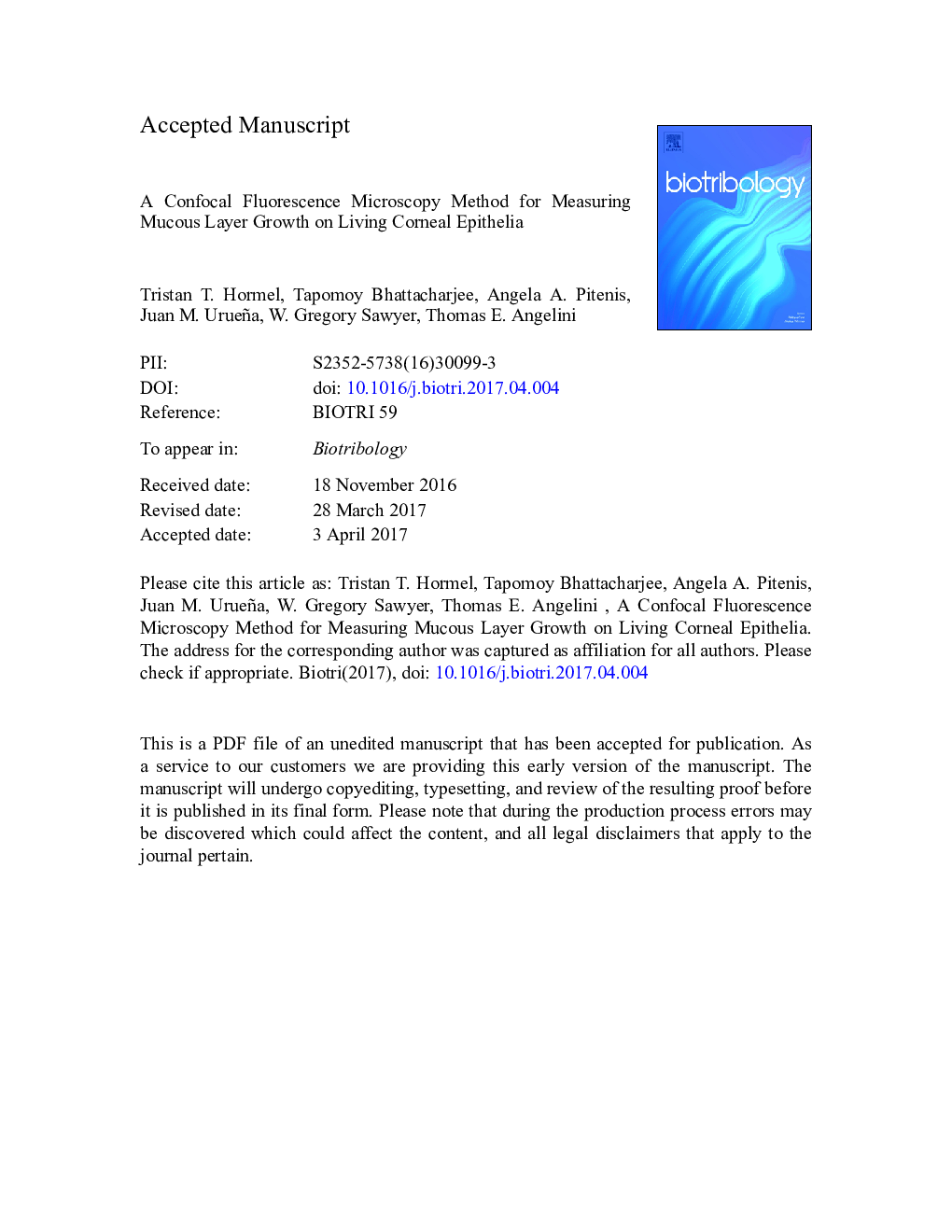| Article ID | Journal | Published Year | Pages | File Type |
|---|---|---|---|---|
| 5011129 | Biotribology | 2017 | 13 Pages |
Abstract
Mucous layers at corneal epithelial cell surfaces perform a variety of tribological roles and are integral to the function of associated biological structures. The primary component of these layers are mucin glycosylated proteins, a broad and diverse class of biological macromolecules that influence tribological and rheological characteristics of the eye's tear film. The tear film composition is incessantly modulated by environmental conditions, active production by living cells, and passive processes such as degradation or wear. Quantitative investigation of mucin production and accumulation at the corneal surface will improve current understanding of tear film stability and function. Here, we present fluorescence microscopy and image analysis techniques capable of capturing the dynamics of mucous layer growth. Using this technique, we observe a non-monotonically thickening mucin layer at the apical surface of a corneal epithelial cell monolayer, while the total amount of mucin increases at a rate indicative of diffusion limited growth.
Related Topics
Physical Sciences and Engineering
Engineering
Biomedical Engineering
Authors
Tristan T. Hormel, Tapomoy Bhattacharjee, Angela A. Pitenis, Juan M. Urueña, W. Gregory Sawyer, Thomas E. Angelini,
